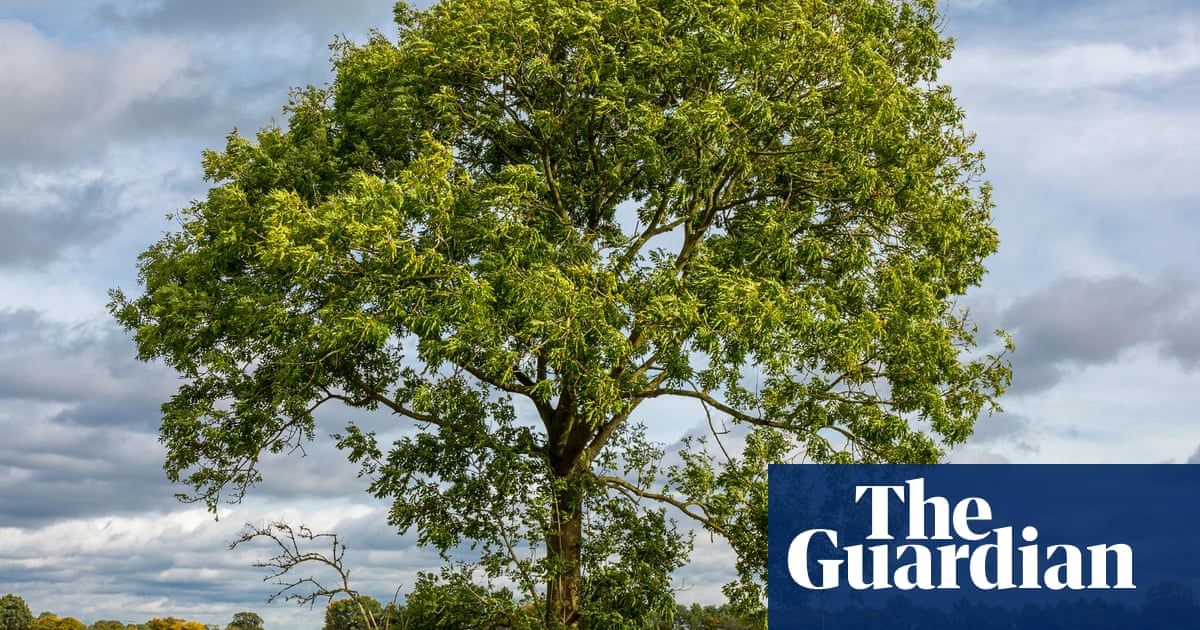New generations of wild ash trees are rapidly evolving resistance to the fungus devastating their numbers, scientists have discovered.
The discovery gives hope, the researchers said, and shows that allowing the natural regeneration of woodlands is vital to enabling this evolution to take place. However, it remains too early to say if the development of resistance in the ash trees can outpace the destruction being caused by the ash dieback fungus.
The genetic analysis is also a scientific breakthrough. It is the first convincing proof of a prediction made by Charles Darwin that significant changes in organisms can result from natural selection driving very many small changes, not just from one or two obvious ones.
Ash dieback is caused by the invasiveHymenoscyphus fraxineusfungus, which was first identified in the UK in 2012 and is also killing trees across Europe. It haskilled millions in the UKand is expected to wipe out up to 85% of the older, non-resistant ash trees, incurringcosts of £15bn.
Previous studies found apparent resistance in some ash saplings but the new study gives in-depth genetic information that could help breeding programmes to support the natural recovery of ash trees.
“Our new findings give us new hope,” said Prof Richard Buggs, at the Royal Botanic Gardens Kew and Queen Mary University of London (QMUL): “Elm trees have struggled to evolve to Dutch elm disease, but ash produce an abundance of seedlings upon which natural selection can act when they are still young. Through the death of millions of ash trees, a more resistant population of ash is appearing.”
Prof Richard Nichols, also at QMUL, said: “We have to be cautious. We can’t say the ash is saved, but we are in a position to say it’s looking promising. We are watching evolution happen and what’s remarkable is that it’s happening so quickly, in a single generation.” One ash tree can produce 10,000 genetically distinct seeds in one season, leading to scores of saplings.
The study,published in the journal Science, compared the DNA of trees that were already growing before ash dieback’s arrival with younger trees that were established after.
The new trees have to grow up through the leaf mould where the fungus replicates and the researchers found that about 30% of these were killed by ash dieback, providing a strong driving force for evolution. “Only the fittest survive – those that made it through that intense early episode of selection,” said Nichols.
Previous genetic work had identified thousands of locations in ash DNA that appeared to either protect the trees from dieback, or make them more vulnerable. The scientists recorded subtle changes at these locations, showing the younger generation possessed greater resistance than their predecessors.
This showed that the DNA changes predicted whether saplings were more likely to flourish or die and therefore demonstrated that Darwinian evolution by natural selection was taking place.
Sign up toDown to Earth
The planet's most important stories. Get all the week's environment news - the good, the bad and the essential
after newsletter promotion
Ash dieback kills trees slowly and Nichols said the research showed the best strategy was to keep as many trees alive as possible to allow their offspring to evolve. Felling and destroying infected trees would mean important genetic variability was lost.
Rebecca Gosling, of the Woodland Trust, which owns Marden Park woods in Surrey, where the study took place, said: “The findings highlight how vital it is to support natural regeneration in woodlands, furthering our understanding of how to best manage our ash woodlands.”
“However, natural selection alone may not be enough to produce fully resistant trees,” said Dr Carey Metheringham, at QMUL. “The existing genetic variation in the ash population may be too low, and as the trees become scarcer, the rate of selection could slow.”
Therefore, human interventions may also be required to support ash tree recovery, the researchers said. This could include selective breeding for resistant varieties, cross-breeding with Asian ash trees, which evolved with the fungus and are therefore highly resistant, or even gene editing.
